The Grand Canyon is an excellent opportunity to see wildlife in its natural environment, including a few dangerous creatures.
Grand Canyon National Park is awe-inspiring, and people come from around the world to see the amazing views alone.
Today, though, we’ll check out the most dangerous creatures you could encounter at Grand Canyon National Park.
Let’s explore!
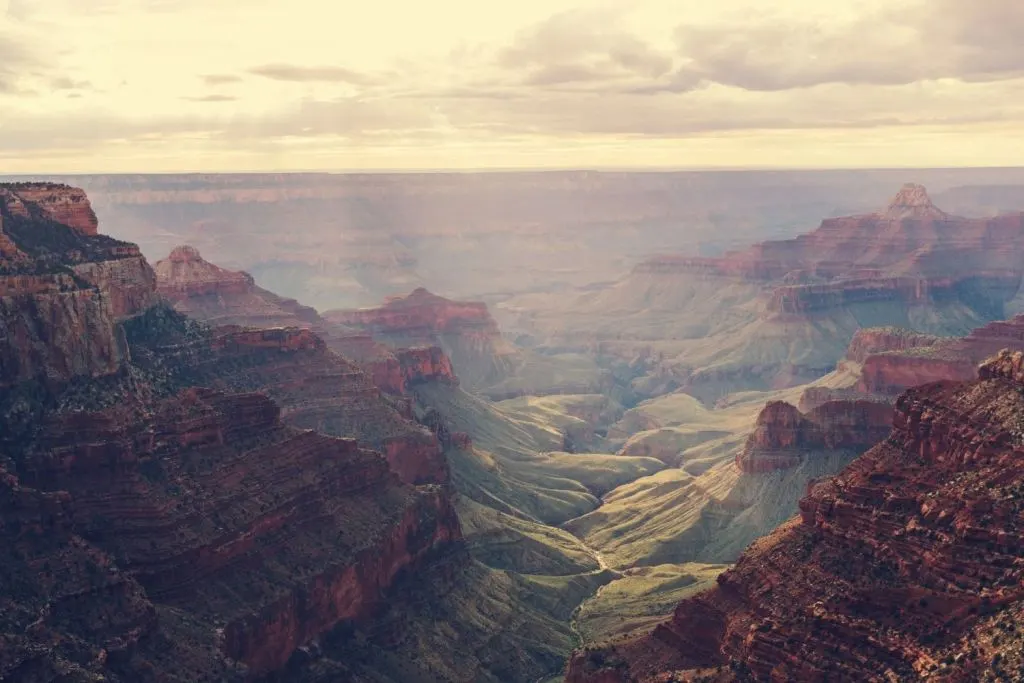
Stay Away from These Dangerous Creatures in Grand Canyon National Park
The Grand Canyon is home to thousands of animals. While many of these animals are harmless, there are quite a few dangerous animals. Our list of most dangerous animals includes mammals, reptiles, and insects.
Join us as we learn more about these wild creatures.
Most Dangerous Mammalian Creatures in the Grand Canyon
Mammals, classified as animals with fur, who have live babies, and whose mothers nurse their children, are the largest animals on Earth.
The size of some of these animals can make them dangerous, but there are other reasons to avoid them.
The Rock Squirrel – Most Innocent Dangerous Animal
The rock squirrel is a large rodent. It’s relatively harmless when left alone. But many visitors have found that they can become very agitated if you invade their space.
For example, multiple visitors have reported rock squirrel attacks after attempting a selfie with the squirrel.
These attacks are such a big problem that rangers have posted signs around the Grand Canyon advising against “squirrel selfies.”

Mountain Lions
Mountain lions usually fly under the radar because their fawn-colored fur blends in with the natural background. They also rarely approach people. But if you surprise a mountain lion or come across a territorial feline, they can be quite dangerous.
If you do encounter a mountain lion, rangers stress that you should not run. Running can trigger the mountain lion’s prey drive and make them more likely to attack. Likewise, rangers suggest making yourself as big as possible by raising your arms.
You should also maintain eye contact and shout. Hopefully, the mountain lion will decide you’re not worth the effort and run away.
Coyotes
Coyotes are cream-colored and have pointed ears with black tips on their relaxed tails. While coyotes look like dogs, they’re far more vicious than man’s best friend.
Although Coyotes don’t usually attack humans, they have a history of killing cattle and small animals, so be careful if you take your pet with you.
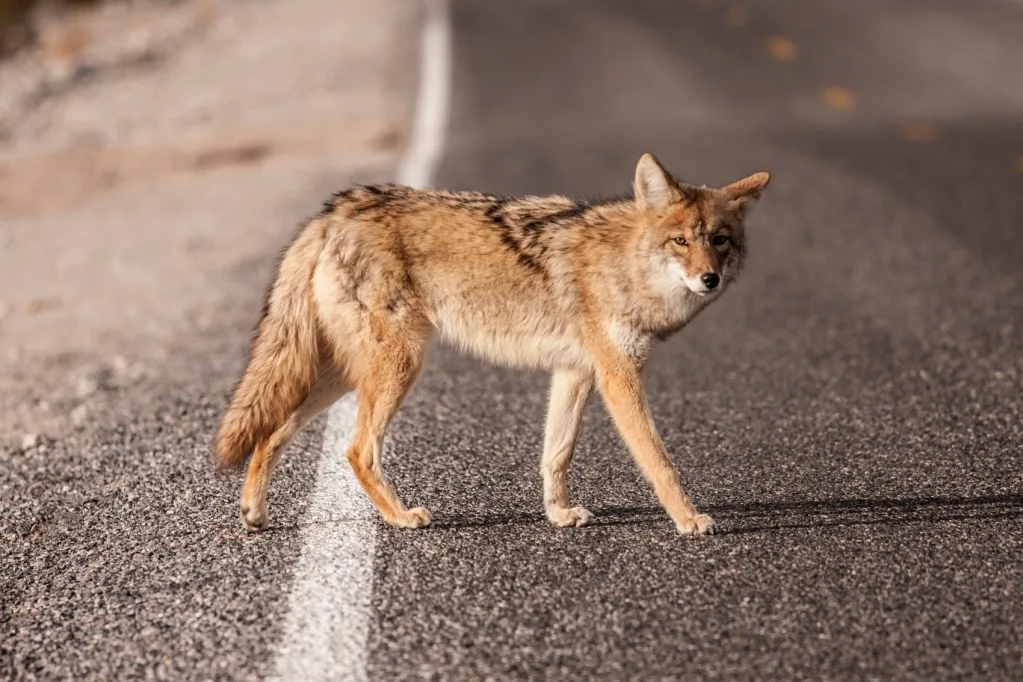
Black Bears
Black bears are smaller than brown bears and usually live in wooded areas. They’re generally shy and avoid people. However, interactions with a black bear can still be dangerous. For example, mother black bears can be extremely aggressive when protecting their cubs.
Black bears sometimes enter campgrounds looking for food. Anything not securely locked up is fair game. Even strongly scented lotions or deodorants can attract a bear.
Therefore, all food and scented items must be locked up at night or when you’re away from the campsite.
Bison
Bison are dangerous because of their size. They’re big; really big. They usually travel in herds and, if startled, can stampede. Stampeding bison will run over anything in their path.
Also, if you encounter a single bison and he decides to charge, you’ll be unable to run fast enough to escape.
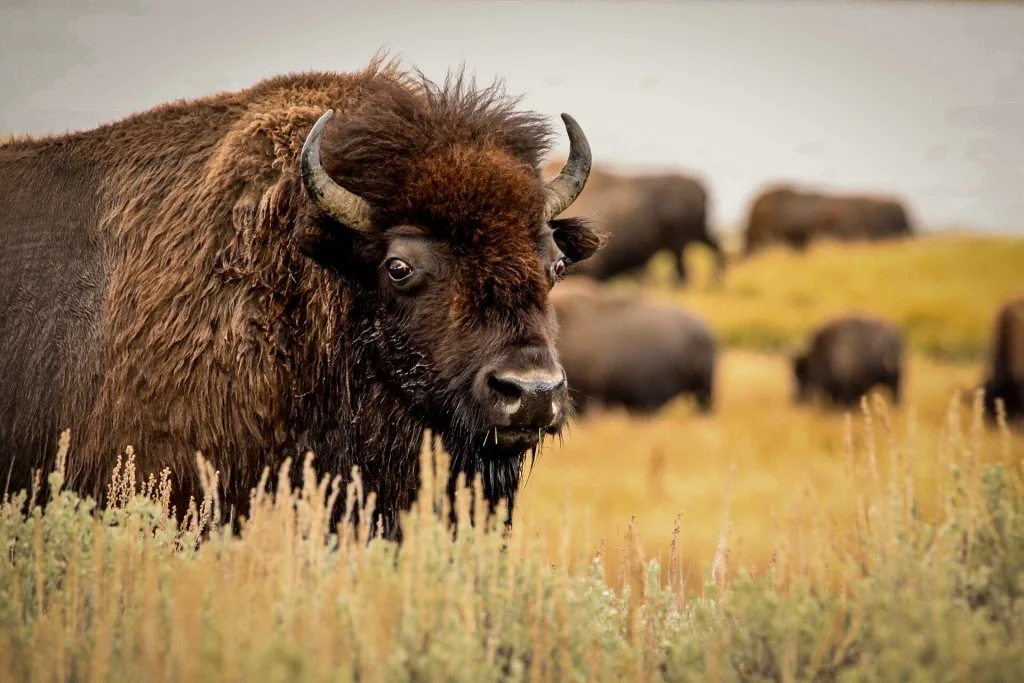
Elk
Similar to bison, elk are also large animals. Elk are also usually shy and gentle, but male bull elk can become very aggressive during rut or mating season. Mating season runs from August to October every year, and the excess of testosterone can make males very aggressive.
If you stumble upon one of these males, they may charge and attack. And a charging bull elk can kill.
Most Dangerous Reptilian Creatures in the Grand Canyon
Reptiles are animals with scales and who typically lay eggs. However, some reptiles have live births but are still different from mammals because they don’t care for their young.
Reptiles are most commonly dangerous because they’re poisonous or venomous. Two dangerous reptiles located in the Grand Canyon are rattlesnakes and Gila monsters.
Rattlesnakes
Rattlesnakes are desert snakes with diamond patterns on their backs. They’re dangerous because they’re venomous. When disturbed, a rattlesnake will curl up and shake the rattle on the end of its tail.
If you don’t heed this sound, it may strike. Retractable fangs bury into the victim’s skin and inject poison.
Rattlesnake venom can be deadly but not usually because antivenom is common and kept at most clinics and hospitals. Therefore, if bitten, don’t panic. Instead, remain calm and wait for medical attention.
First aid for a snake bite includes cleaning and covering the wound and placing the injection site below the heart, which will slow the spread of the poison.
Medical experts also suggest removing any tight jewelry or clothing around the site because the area will begin to swell.
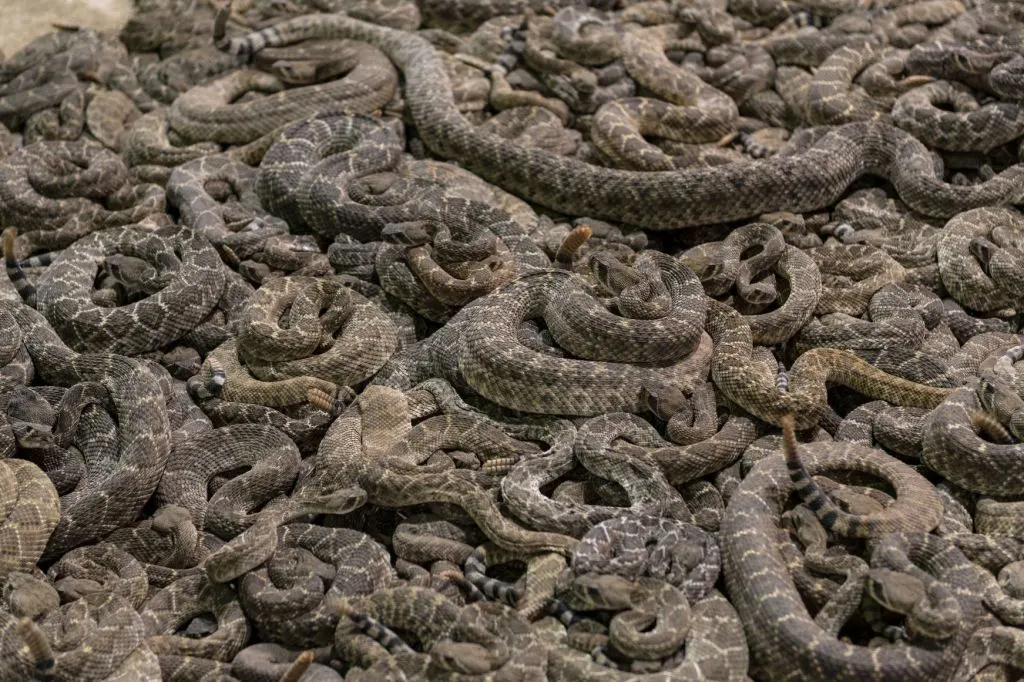
Gila Monster
Gila (pronounced HEE-LA) monsters have round, smooth pebble-like scales across most of their bodies. The Gila monster has venom glands inside of its mouth. When a Gila monster bites its prey, grooves in the teeth help direct the venom into the wound.
Although Gila bites are venomous, they’re more painful than anything. The biggest problem you’ll have is getting the Gila monster to release after biting you. Gila monsters have a firm bite and, at times, are hesitant to loosen their grip, which can even add extra venom. Additionally, Gila monster bites are rare because they tend to avoid interactions with humans.
Most Dangerous Insect and Spider Creatures in the Grand Canyon
Insects are small invertebrate creatures with three body parts and six legs. Some insects have wings, but others don’t. In contrast, spiders only have two body parts and eight legs. There are many reasons a spider or an insect can be dangerous, and any of these insects is an excellent reason to remember your bug spray.
Bark Scorpion
Scorpions don’t bite; they sting. And it hurts. Most scorpions are venomous, but the bark scorpion is the only scorpion to inject enough venom to cause severe symptoms. Young children and older adults are particularly susceptible to bark scorpion venom.
Scorpions reside in small, tight spaces. Many Arizona natives suggest checking your shoes before putting them on because scorpions like crawling into them and hiding.
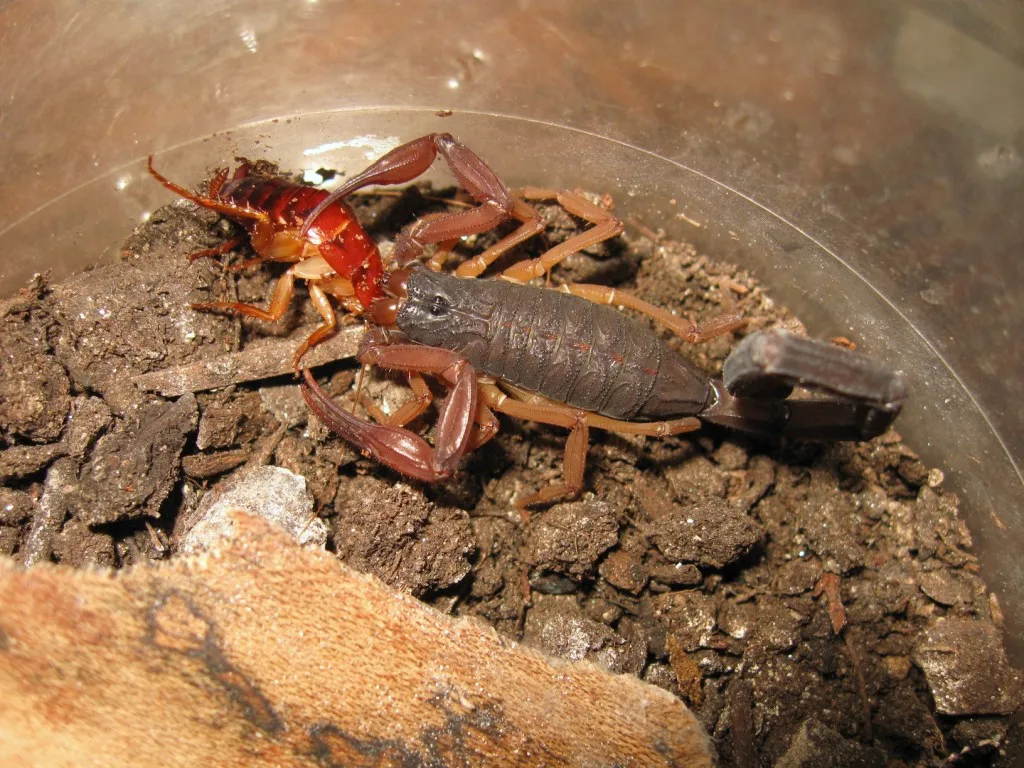
Black Widow Spiders
The black widow is a slender black spider with a red hourglass-shaped spot on its abdomen. Known to live in higher elevations at the Grand Canyon, the females are the only dangerous ones, as the males and juveniles are harmless.
The black widow spider is more dangerous than any other North American spider. The venom is 15 times more toxic than rattlesnake venom.
But the bite is rarely deadly because it only injects a small dose of venom.
Bees
Even though bee stings hurt, bees aren’t usually dangerous unless they swarm. Swarming bees aren’t angry or looking for someone to attack; they’re simply looking for a new home. But a swarming hive can attack because they’re highly defensive insects.
African killer bees have made their way to the Grand Canyon.
This type of bee is more likely to swarm and can be highly aggressive, delivering 10 stings per pound. A 150-pound human can withstand 1,500 stings, but children and the elderly are more susceptible to stings and more likely to have adverse reactions.
Mosquitoes
While most would label mosquitos a nuisance, mosquitoes have been called the most dangerous animals on Earth.
Mosquitoes are so dangerous because they carry and pass along several deadly diseases, including yellow fever, dengue, malaria, and other diseases.
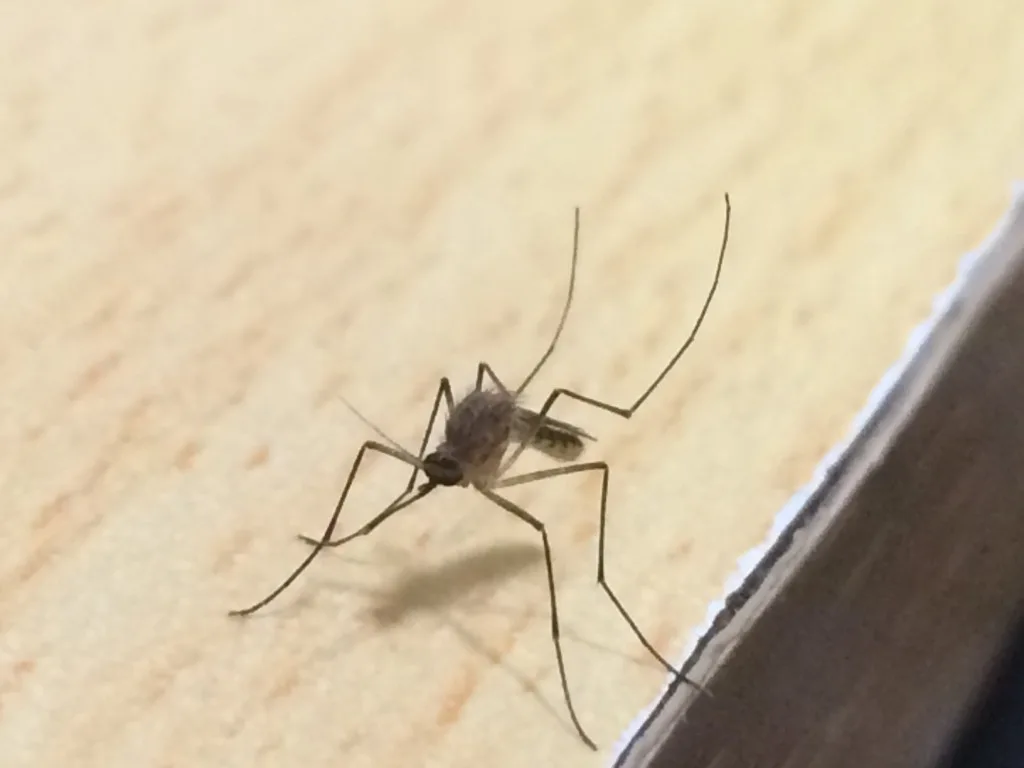
Wasps
Tarantula hawks, a giant wasp, live at the Grand Canyon and grow up to two inches in length. Females have a ¼-inch stinger and are known to attack tarantulas, hence the name.
Although their sting isn’t deadly, a tarantula hawk sting is the second-most painful sting among insects. They won’t usually sting unless provoked, but steer clear regardless.
Fire Ants
The ants at the Grand Canyon are technically not fire ants but red harvester ants. Regardless of their name, their stings still hurt as much as fire ants. Most stings occur when an individual unknowingly steps on or disturbs a nest.
To avoid this, make sure to scout out your area and locate any nests. Signs of an ant nest include small holes in the ground and localized ant activity. Avoid these areas and set up camp far from the nest.
If you do get stung, one of the best remedies is cold water. Soaking the sting in cold water can help reduce the throbbing pain. A local pain reliever and bite or sting swabs can also help.
Keep Your Distance From Dangerous Animals
Spotting any of these creatures at the Grand Canyon can be exciting. Even some of these dangerous animals can seem regal. The key to enjoying all the animals at the Grand Canyon, even the dangerous ones, is maintaining your distance and using common sense.
If you give these animals their space and respect them, you should be able to enjoy your next trip to the Grand Canyon without any problem. Have you ever had a close encounter with a dangerous animal in the wild?
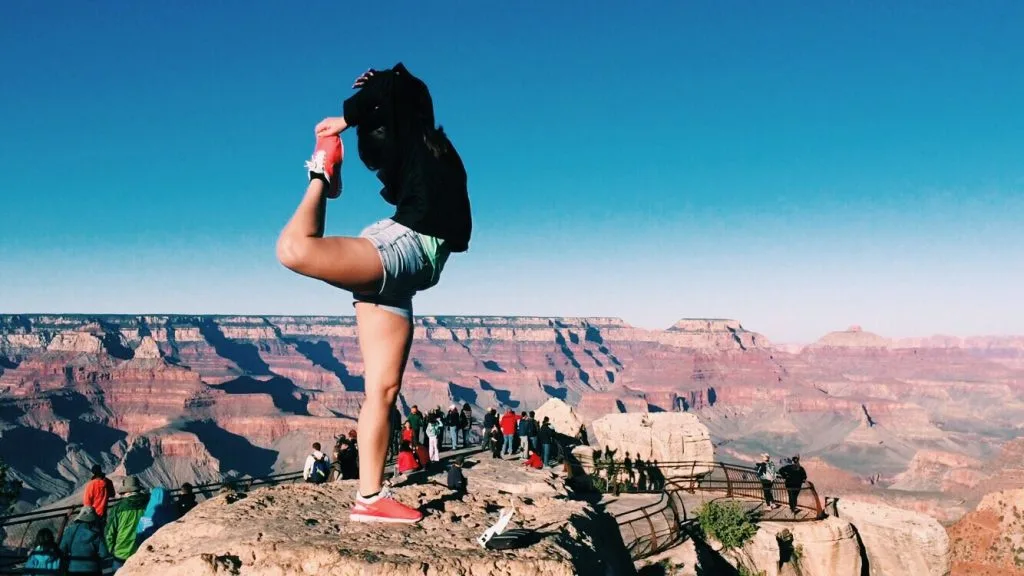
Discover the Best Free Camping Across the USA
To be honest with you, we hate paying for camping. There are so many free campsites in America (with complete privacy).
You should give it a try!
As a matter of fact, these free campsites are yours. Every time you pay federal taxes, you’re contributing to these lands.
Become a FREE CAMPING INSIDER and join the 100,000 campers who love to score the best site!
We’ll send you the 50 Best Free Campsites in the USA (one per state). Access the list by submitting your email below:
The most dangerous animal anywhere is human. We kill all the others, often just for fun.